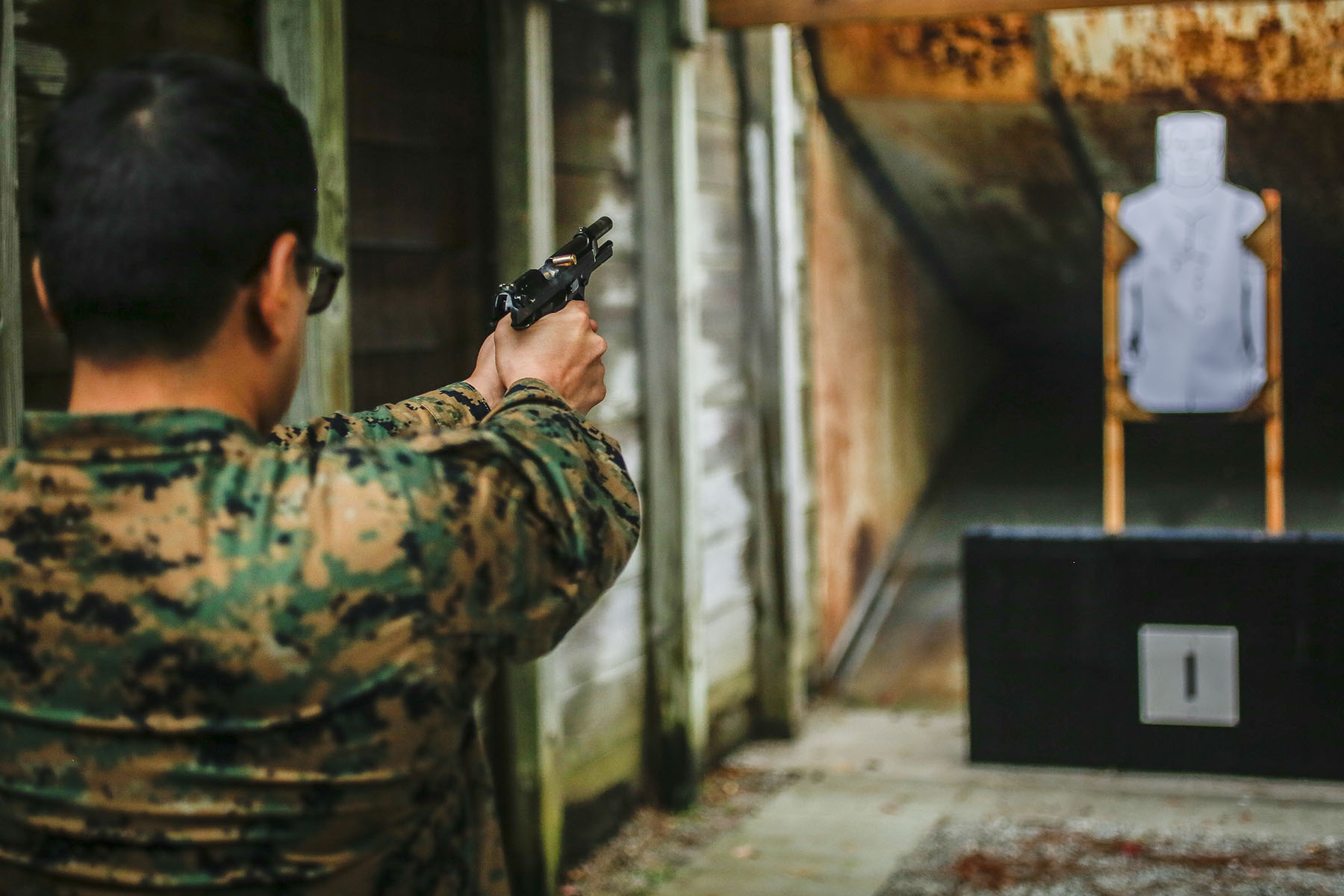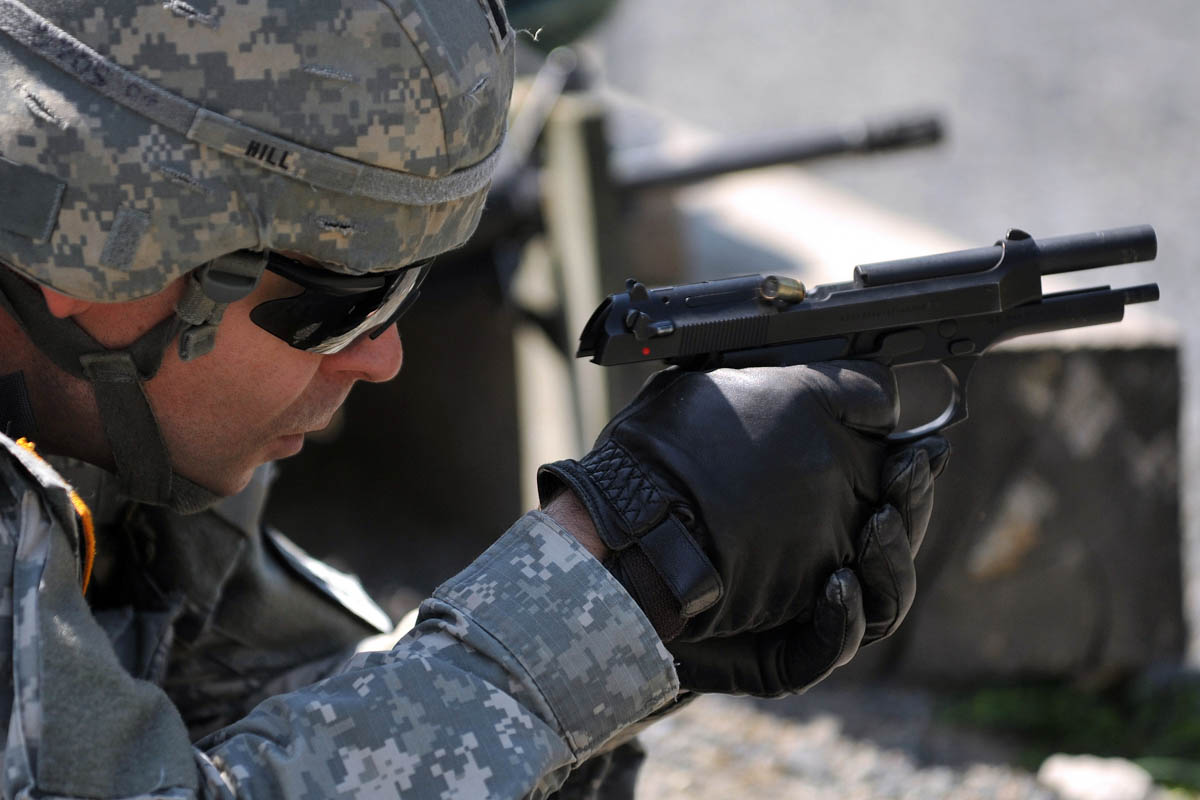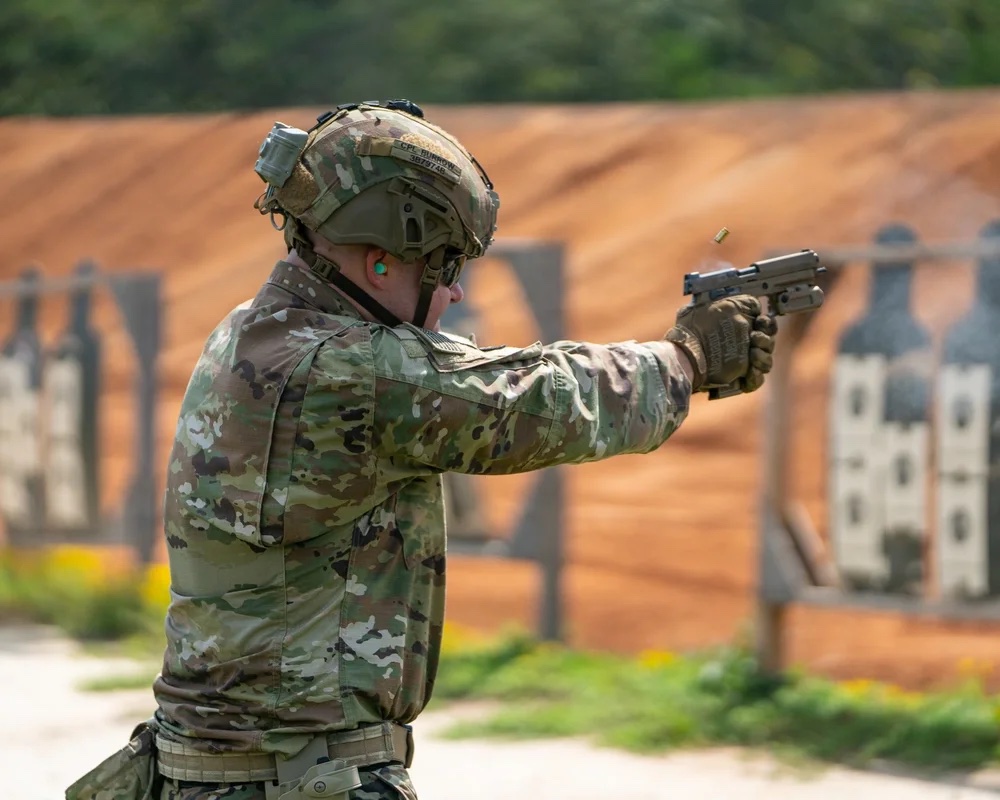Navy Seal Handgun - Key point: Mk. 25 has been a constant companion for SEALs over the past three decades, including operations in Panama, Somalia, Haiti, the Balkans, Iraq, Afghanistan, Syria and other countries.
For three decades, the US Navy's Sea Air Land (SEAL) special forces teams have relied on pistols to outlaw the rest of the US military. While the Army, Marine Corps, and the rest of the Navy also used the Beretta M9 pistol, the Navy SEALs carried a completely different handgun: the Sig Sauer P226.
Navy Seal Handgun

In the mid-1980s, the US Army finally transitioned from the M1911A1.45 caliber handgun to a new pistol, the Beretta 92FS. U.S. The Beretta, known as the M9, was considered a modern, safe, easy-to-shoot handgun with twice the ammunition of the .45. The M9 was adopted by all branches of the military, including the US Navy's elite SEAL Team Six. Trained for counter-terrorism operations, Team Six operators honed their close-quarters marksmanship skills to the front line, and in the 1980s Team Six's small arms weapons budget was said to exceed that of the entire US Marine Corps.
Stolen Us Military Guns Used In Violent Crimes Found Around The Nation
All this meant that the SEALs assigned to Team Six put a lot of wear and tear on their pistols. In 1986, a SEAL performing a Beretta for a visiting VIP was injured when the back of the pistol slide broke, sending the slide crashing into the sailor's face. Although the damage was relatively minor and only a few pistols showed signs of slide cracking (a Beretta defect that was later fixed), the SEALs wanted a new pistol.
According to small arms historian Kevin Dockery, the SEALs tested the then-new Glock 17 pistol as a possible alternative. The Glock performed well in the so-called "salt mist test" which tested the metal for corrosion, an important consideration for SEALs given their tendency to submerge themselves fully in salt water. Not surprisingly, the Navy concluded that the Glock was "significantly less reliable than the Beretta M9 in other ways."
Instead, the SEALs carried the P226 handgun. Developed by the German-Swiss arms manufacturer Sig Sauer for competition to replace the M1911A1, the P226 was the successor to the M9. The P226 was a variant of the company's popular P220, which was the official sidearm of armies around the world from Switzerland (naturally) to Japan. The P226 was immediately put through extensive environmental testing that simulated the operating environment of SEAL units, including immersion in sand, salt water and mud. Careful not to recruit another pistol with slide cracking problems, the SEALs put five test pistols each through a thirty thousand round endurance test.
Sig Sauer itself had a great history. A Swiss industrial company that makes everything from railway cars to handguns, the Schweizerische Industrie Gesellschaft (SIG) was founded in Neuhausen am Rheinfall, Switzerland in 1853 and was the brains behind the SIG handgun P210. In 1976, SIG's firearms division joined Sauer & Sohn. Sauer & Sohn was Germany's oldest arms manufacturer at the time, founded in 1751, and traditionally had an emphasis on gun sports.
These Are The Navy's Top 6 Mk Handguns
In SEAL service the P226 became known as the Mk. 25. The handgun was derived from the original Sig P10, a highly successful handgun in its own right, but updated with modern features. Like the 210, the 226 used the Petter-Browning locking system, which updated John Browning's 1911 locking system with improvements by Swiss engineer Charles Petter, eliminating the barrel bushing and using a full-length guide rod. The P226's main competitor, the Glock 17, also uses a Petter-Browning locking system, as do many contemporary pistols.
The SEALs made an initial request for eight hundred P226s and the first pistol, officially designated the Mk. 25, 1989 entered the field. Mk. 25 has a 4.4-inch barrel, about half an inch shorter than the Beretta M9, and the handgun is chambered for a nine-millimeter parabellum. The frame is made of alloy steel, while the slide is made of stainless steel for strength, and the slide is finished in nitrone for corrosion resistance. The gun weighs just over two pounds with a loaded two ounce magazine.
Mk. 25 can be operated as a single or double action pistol, and has a decocker to safely release the hammer without firing a round. Unlike the Beretta there is no manual safety - all mechanical safety is built into the fire control system to prevent accidental discharge. The pistol magazine holds fifteen rounds in a double stack configuration. While this increases the amount of firepower the Sig can put out, it also widens the grip of the pistol, making it less ergonomic for people with smaller hands.

Mk. 25 has been a constant companion for SEALs over the past three decades, including operations in Panama, Somalia, Haiti, the Balkans, Iraq, Afghanistan, Syria and other countries. In late 2015, the Navy's Special Warfare Command decided to add the Glock 19, a compact nine-millimeter version of the Glock series of handguns, to the SEALs' handgun arsenal. While Mk. 25s will remain, SEALs will gradually replace them with newer Glocks. Sig Sauer had a good run in the quarter century arming America's naval commandos, and now the torch has been passed to Glock. Here's what you need to remember: Mk. 25 has been a constant companion for SEALs over the past three decades, including operations in Panama, Somalia, Haiti, the Balkans, Iraq, Afghanistan, Syria and other countries.
Custom 1911 Pistol Honoring Hero Navy Seal Features World Trade Center Steel
For three decades, the US Navy's Sea Air Land (SEAL) special forces teams have relied on pistols to outlaw the rest of the US military. While the Army, Marine Corps, and the rest of the Navy also used the Beretta M9 pistol, the Navy SEALs carried a completely different handgun: the Sig Sauer P226.
In the mid-1980s, the US Army finally transitioned from the M1911A1.45 caliber handgun to a new pistol, the Beretta 92FS. U.S. The Beretta, known as the M9, was considered a modern, safe, easy-to-shoot handgun with twice the ammunition of the .45. The M9 was adopted by all branches of the military, including the US Navy's elite SEAL Team Six. Trained for counter-terrorism operations, Team Six operators honed their close-quarters marksmanship skills to the front line, and in the 1980s Team Six's small arms weapons budget was said to exceed that of the entire US Marine Corps.
All this meant that the SEALs assigned to Team Six put a lot of wear and tear on their pistols. In 1986, a SEAL performing a Beretta for a visiting VIP was injured when the back of the pistol slide broke, sending the slide crashing into the sailor's face. Although the damage was relatively minor and only a few pistols showed signs of slide cracking (a Beretta defect that was later fixed), the SEALs wanted a new pistol.
According to small arms historian Kevin Dockery, the SEALs tested the then-new Glock 17 pistol as a possible alternative. The Glock performed well in the so-called "salt mist test" which tested the metal for corrosion, an important consideration for SEALs given their tendency to submerge themselves fully in salt water. Not surprisingly, the Navy concluded that the Glock was "significantly less reliable than the Beretta M9 in other ways."
The Modern Day Gunslinger: The Ultimate Handgun Training Manual: Mann, Don, Grossman, Lt. David: 9781510769885: Books
Instead, the SEALs carried the P226 handgun. Developed by the German-Swiss arms manufacturer Sig Sauer for competition to replace the M1911A1, the P226 was the successor to the M9. The P226 was a variant of the company's popular P220, which was the official sidearm of armies around the world from Switzerland (naturally) to Japan. The P226 was immediately put through extensive environmental testing that simulated the operating environment of SEAL units, including immersion in sand, salt water and mud. Careful not to recruit another pistol with slide cracking problems, the SEALs put five test pistols each through a thirty thousand round endurance test.
Sig Sauer itself had a great history. A Swiss industrial company that makes everything from railway cars to handguns, the Schweizerische Industrie Gesellschaft (SIG) was founded in Neuhausen am Rheinfall, Switzerland in 1853 and was the brains behind the SIG handgun P210. In 1976, SIG's firearms division joined Sauer & Sohn. Sauer & Sohn was Germany's oldest arms manufacturer at the time, founded in 1751, and traditionally had an emphasis on gun sports.
In SEAL service the P226 became known as the Mk. 25. The handgun was derived from the original Sig P10, a highly successful handgun in its own right, but updated with modern features. Like the 210, the 226 used the Petter-Browning locking system, which updated John Browning's 1911 locking system with improvements by Swiss engineer Charles Petter, eliminating the barrel bushing and using a full-length guide rod. The P226's main competitor, the Glock 17, also uses a Petter-Browning locking system, as do many contemporary pistols.

The SEALs made an initial request for eight hundred P226s and the first pistol, officially designated the Mk. 25, 1989 entered the field. Mk. 25 has a 4.4-inch barrel, about half an inch shorter than the Beretta M9, and the handgun is chambered for a nine-millimeter parabellum. The frame is made of alloy steel, while the slide is made of stainless steel for strength, and the slide is finished in nitrone for corrosion resistance. The gun weighs just over two pounds with a loaded two ounce magazine.
Navy Seal Handgun Icon Doodle Hand Drawn Vector Image
Mk. 25 can be operated as a single or double action pistol, and has a decocker to safely release the hammer without firing a round. Unlike the Beretta there is no manual safety - all mechanical safety is built into the fire control system to prevent accidental discharge. The pistol magazine holds fifteen rounds in a double stack configuration. While this increases the amount of firepower the Sig can put out, it also widens the grip of the pistol, making it less ergonomic for people with smaller hands.
Mk. 25 has been a constant companion for SEALs over the past three decades, including operations in Panama, Somalia, Haiti, the Balkans, Iraq, Afghanistan, Syria and other countries. In late 2015, the Navy's Special Warfare Command decided to add the Glock 19, a compact nine-millimeter version of the Glock series of handguns, to the SEALs' handgun arsenal. While Mk. 25s will continue, SEALs will gradually replace newer Glocks. Sig Sauer had a good run in the quarter century arming the commandos of the American navy, and
Navy seal application, luminox navy seal 3500, navy seal handgun training, navy seal foundation, navy seal pst, navy seal requirements, becoming a navy seal, navy seal recruiting, us navy seal salary, navy seal foundation store, luminox navy seal blackout, navy seal enlistment
0 Comments